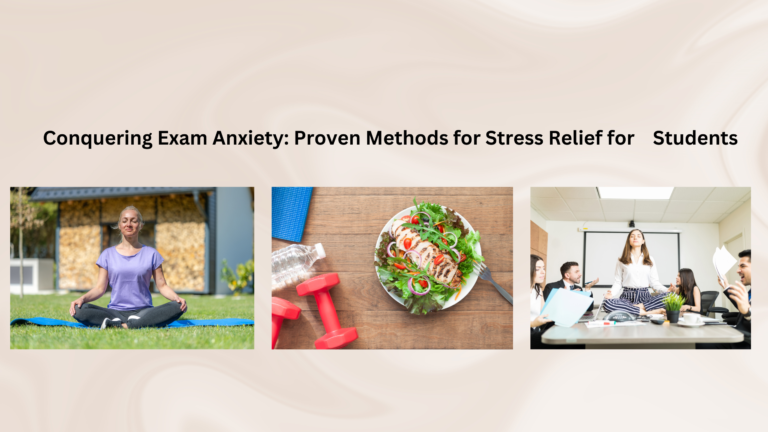What is Your Strategy for Balancing Academic Work with Extracurricular Activities?
Introduction
Striking a balance between academic work and extracurricular activities is crucial for students looking to make the most of their school or university experience. This post will help you develop a strategy for managing both, ensuring you excel academically while enjoying the benefits of participating in activities like sports, clubs, or volunteering.
What’s in it for you? By the end of this post, you’ll learn practical ways to create a schedule, avoid burnout, and prioritize your commitments effectively.
Advantages and Disadvantages of Balancing Academics and Extracurriculars
Advantages:
- Time Management Skills: Balancing multiple commitments helps you develop excellent time management skills. You learn to prioritize tasks and stay organized, which is crucial not only in school but also in future career roles.
- Well-rounded Development: Extracurricular activities such as sports, arts, or volunteer work help you develop soft skills like teamwork, communication, and leadership.
- Networking Opportunities: Engaging in extracurriculars can connect you with peers, mentors, and professionals in various fields, providing opportunities for personal and career growth.
- Mental Breaks: Extracurriculars offer an essential break from academic pressure. Whether it’s a sport or a creative outlet, it helps you recharge.
Disadvantages:
- Time Conflicts: Juggling extracurriculars with academics can lead to scheduling conflicts, leaving less time for study or assignments, which might impact your grades.
- Burnout Risk: Without careful planning, trying to do too much can lead to stress and exhaustion.
- Compromised Academic Focus: Focusing too much on activities outside of school can sometimes cause your academic performance to suffer.
Problems and Concerns
One of the primary concerns is the risk of overcommitment. Students often underestimate the time required for extracurriculars, leading to exhaustion. Another issue is poor prioritization, where students may focus more on enjoyable activities and neglect academic work. Additionally, the pressure to excel in all areas can lead to mental health challenges such as stress and anxiety.
Balancing your mental well-being while handling multiple responsibilities is essential. Ignoring signs of burnout or mental strain can negatively impact both your academic and personal life.
Dos and Don’ts
Dos:
- Create a schedule: Use a planner or digital calendar to allocate time for both academics and extracurriculars.
- Set priorities: Know which activities are non-negotiable and which can be skipped during busy academic periods.
- Learn to say no: It’s okay to decline new commitments when you’re already overwhelmed.
- Make time for relaxation: Ensure that you have downtime to rest and recover.
Don’ts:
- Overbook yourself: Avoid saying yes to every opportunity; assess your schedule first.
- Neglect academics: Remember, your primary goal is education. Extracurriculars should enhance your experience, not overshadow it.
- Forget self-care: Always prioritize your health and well-being over additional commitments.
Case Study: A Student’s Experience Balancing Academics and Extracurriculars
Meet Sarah, a high-achieving student involved in both her university’s debate team and student government. During her first year, she struggled with time management, often sacrificing study time to meet her extracurricular commitments. However, in her second year, Sarah implemented a strict scheduling system that allowed her to plan out her days, allocating specific hours for study, meetings, and downtime. Her grades improved, and she was able to fully enjoy both her academic and extracurricular experiences without feeling burnt out.
Frequently Asked Questions (FAQs)
- How many extracurricular activities should I participate in? It depends on your capacity. Start with one or two activities you are passionate about, and add more only if you can manage them without compromising your academics.
- How do I know if I’m overcommitted? Signs include missing deadlines, constant stress, lack of sleep, and a drop in academic performance. If you’re experiencing these, it’s time to scale back.
- What if I can’t keep up with my extracurricular commitments? Don’t hesitate to discuss your situation with your club or team leader. They might offer you a less demanding role.
- Can extracurriculars really help me in the future? Yes! Extracurriculars build valuable skills like leadership, time management, and teamwork, which are highly attractive to employers.
- How do I find a balance between relaxing and staying productive? Incorporate short breaks into your study sessions, and ensure you’re taking at least one day off every week for relaxation and non-academic activities.
My Advice
Finding balance requires self-awareness and discipline. Don’t be afraid to reassess your commitments throughout the semester. If your grades begin to suffer, take a step back from extracurriculars until you regain control. Also, don’t underestimate the importance of sleep, nutrition, and physical activity—they’re the foundation of a well-balanced life.
Conclusion
Balancing academic work with extracurricular activities is all about effective time management, prioritization, and self-care. While it may seem challenging at first, with the right strategies in place, you can enjoy both academic success and personal growth through your extracurricular involvement. Remember, the goal is to enrich your experience, not overwhelm yourself.







